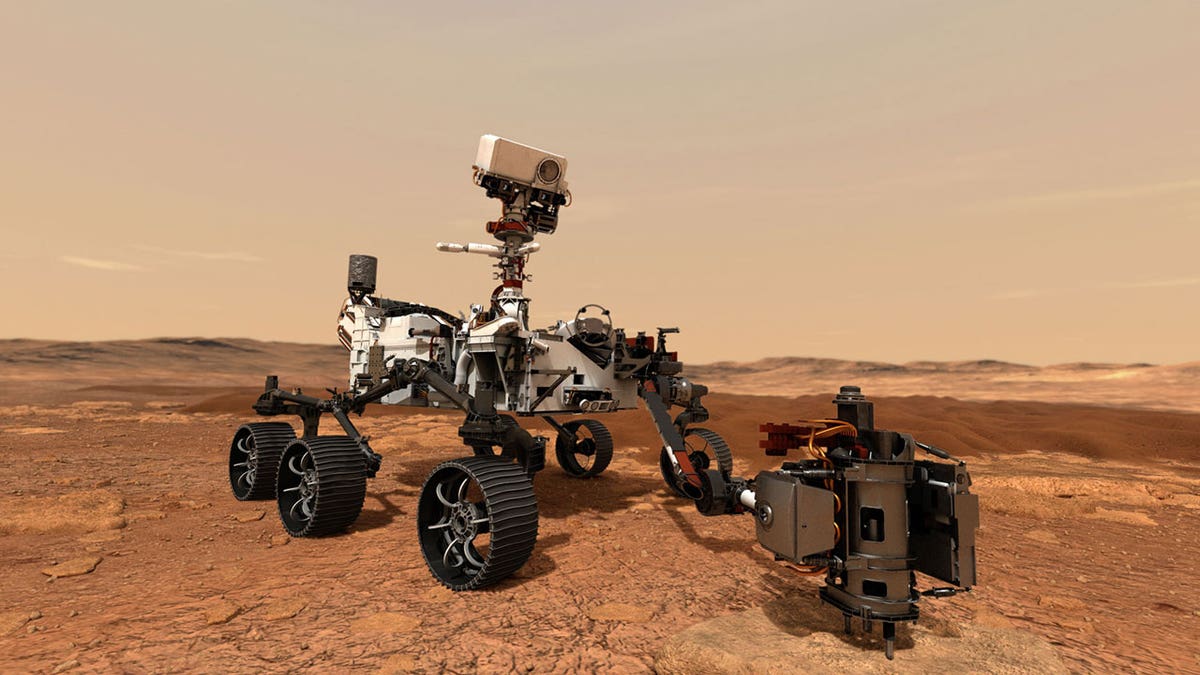NASA Mars Perseverance rover provided valuable data: Former astronaut
Mechanical engineering professor Mike Massimino discusses the complex mission to the Red Planet on 'Your World'
- NASA's plan to retrieve samples from Mars and bring them back to Earth is currently on hold due to the need for a faster and cheaper method.
- The project has been on NASA's agenda for years, but the costs have escalated, with an estimated total cost of $8 billion to $11 billion and an arrival date of 2040.
- Administrator Bill Nelson said the cost and timeline are unacceptable and is seeking alternative options to revamp the project.
NASA’s plan to bring samples from Mars back to Earth is on hold until there’s a faster, cheaper way, space agency officials said Monday.
Retrieving Mars soil and rocks has been on NASA’s to-do list for decades, but the date kept moving forward, as costs ballooned. A recent independent review put the total cost at $8 billion to $11 billion, with an arrival date of 2040, about a decade later than advertised.
NASA Administrator Bill Nelson said that’s too much and too late. He’s asking private industry and the space agency’s centers to come up with other options to revamp the project. With NASA facing across-the-board budget cuts, he wants to avoid gutting other science projects to finance the Mars sample project.
NASA FINDINGS FROM THE LAST YEAR INCLUDING EXTRAORDINARY ASTEROID SAMPLES, GALACTIC DISCOVERIES
"We want to get every new and fresh idea that we can," he said at a news conference.

In this concept illustration provided by NASA, NASA's Perseverance rover uses its drill to core a rock sample. NASA has put the effort to bring the samples to Earth on hold until there is a faster, cheaper way. (Photo illustration by NASA via Getty Images)
NASA's rover Perseverance already has gathered 24 core samples in tubes since landing in 2021 at Mars’ Jezero Crater, an ancient river delta. The goal is more than 30 samples to scour for possible signs of ancient Martian life.
The space agency wants to get at least some of the collected samples to Earth sometime in the 2030s for no more than the $7 billion. That would require a spacecraft that goes to Mars to get the tubes and launches off the planet. Then it must rendezvous with yet another spacecraft that would bring the samples to Earth.
NASA’s science mission chief, Nicky Fox, refused to speculate at the news conference when the samples might arrive at Earth, given a new program and timeline, or even how many samples might be returned. That information will be included in any proposals, she said.
CLICK HERE TO GET THE FOX NEWS APP
"We’ve never launched from another planet, and that’s actually what makes Mars sample return such a challenging and interesting mission," Fox said.
Scientists are eager to analyze pristine samples from Mars in their own labs, far superior to the kind of rudimentary testing done by spacecraft at the red planet. It will take such in-depth testing to confirm any evidence of microscopic life dating back billions of years when water flowed on the planet, according to NASA.
The samples will help NASA decide where astronauts go on Mars in the 2040s, Nelson said.
NASA’s Jet Propulsion Laboratory in Pasadena, California, had been in charge of the sample project. It was hit by hundreds of layoffs earlier this year due to all the budget cutbacks. Nelson is seeking ideas from across the space agency, with the revamped program more spread out.
NASA hopes to receive any ideas by late fall.




















